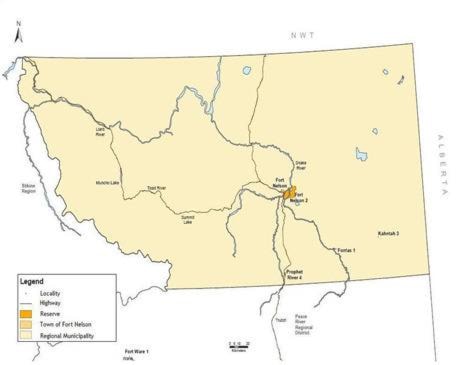With Abbotsford considering a separation from the Fraser Valley Regional District, would the provincial government allow the city to leave?
Some critics believe not.
However, the city is pointing north to show it can be done.
The recently formed Northern Rockies Regional Municipality (NRRM) is a single tier system – the first of its kind in B.C., and a unique arrangement addressing the challenges facing that area.
But is it a fair comparison?
“There are some differences, I mean, we are 250 miles (over 400 kilometres) from the next community,” said Randy McLean, chief administrative officer for the NRRM in Fort Nelson.
Formerly the Fort Nelson–Liard Regional District, and then the Northern Rockies Regional District, the NRRM was formed in February of 2009 after years of negotiations. The region, located in northeastern B.C., is made up of mostly remote mountain and forest areas. Fort Nelson is the only municipality.
McLean said there used to be a lot of repetition as meetings would be held “one after another” – council, regional district, hospital board – all with the same people. The mayor was also chair of the district and council members were district members.
The need for change was spurred more by political reasons than financial. McLean said some people were concerned about their personal “fiefdom,” making it difficult to get cooperation.
“We blended it all together, everyone took the big picture aspect.”
Like the Abbotsford scenario, the process was long and took extensive negotiations with the provincial government. But McLean would not go back to the old system.
“Myself, I don’t believe in regional districts, they don’t function well.”
Colin Griffith, director of strategic initiatives in Fort Nelson, was heavily involved in altering the regional district.
“In B.C., there is always a lot of stress between the urban and rural areas over services,” he said.
Regional districts were created to address those issues, but Griffith believes they only work to varying degrees.
Referencing change in Ontario, which slowly went from 900 municipalities to about 500, Griffith said, “I don’t know if B.C. will go that far ... In the end, it all comes down to the fact that people need services and what is the best way to provide those services?”
The need for reform is the reason the Abbotsford Chamber of Commerce publicly raised the idea of leaving the FVRD.
Executive director David Hull said he doesn’t know if the province will allow Abbotsford to leave, but he does hope the request will open the door to examining the tax system.
He said if the provincial government wants to ensure all areas get equal services “they should pay for it.”
“The property tax system in B.C. is broken,” said Hull.
His main concern is protecting the interest of local business, and if a review of the FVRD helps relieve the tax burden, then Hull said the chamber is doing its job.
But for the city, the goal is to become independent, and save money in the process.
Mayor George Peary said there was no other motive.
“We have started down a path, but we don’t know where it will lead.”
He said the outcome could be that Abbotsford becomes a single tier governance, the city could join with Mission, or even remain with the FVRD, all depending on costs.
The district is reviewing how it provides services and plans to present its findings to Abbotsford in the coming months. A more equitable funding process may convince the city to remain.
The FVRD consists of six municipalities – Abbotsford, Mission, Chilliwack, Hope, Kent and Harrison, as well as seven electoral districts. As the largest member, Abbotsford pays 49 per cent of the total budget ($3 million), but receives less services than other members. It’s estimated the city would save between $800,000 and $1.4 million by leaving.
